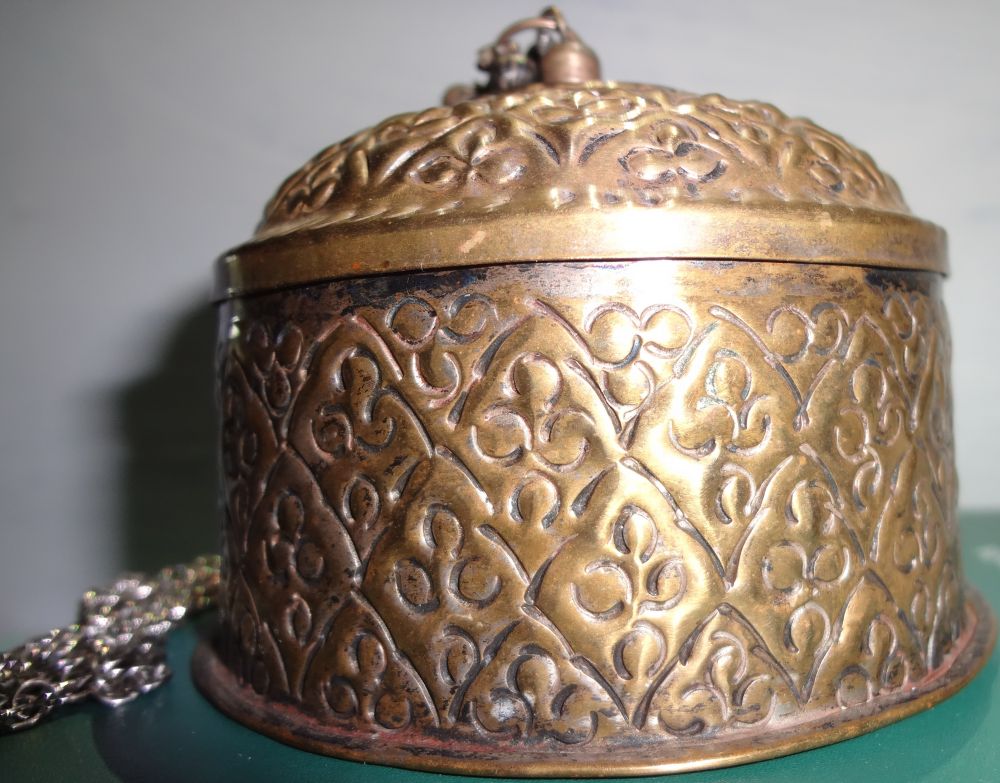正文



A rare antique Tibetans’ ritual item called Tibetan prayer wheel brought to USA by a commissioner in early 1900's. Prayer wheels are also called Mani wheels, either a small hand wheel or large wheels with millions of copies of the mantra inside, are found everywhere in the lands influenced by Tibetan Buddhism. The earliest known mention of prayer wheels is in an account written by a Chinese pilgrim, in 400 AD, while travelling through the area now known as Ladakh. The idea has its origins in a pray practice on the Gautama Buddha phrase “to turn the wheel of the law” meaning “to teach Dharma“ which refers to the event that Buddha beginning to preach. The most common prayer’s sentence is to repeat the written form of the mantra carved on a Mani wheel, Om Mani Padme Hum, out loud or silently, or just view these words, which invokes the powerful benevolent attention and blessings from the Buddha.
六字真言 藏胞們認為修行悟道的最重要條件就是勤於念經。因此,他們把來生幸福的希望寄托在念經上。除了張口說話、飲食及睡眠外,無論坐臥立行走無不喃喃念經。在眾多經類中,邊搖轉經筒邊念得最多的是“六字真言”:唵、嘛、呢、叭、咪、吽。 六字真言為藏傳佛教名詞,據說是佛教秘密蓮花部之“根本真言”。它包含佛部心、寶部心、蓮花部心及金剛部心等內容。“唵”,表示佛部心,謂念此字時,自己的身體要應於佛身,口要應於佛口,意要應於佛意,所謂身、口、意與佛成一體,才能獲得成就;“嘛呢”梵文意為“如意寶”,表示“寶部心”,據說此寶出自龍王腦中,若得此寶珠,入海能無寶不聚,上山能無珍不得,故又名“聚寶”;“叭咪”,梵文意為“蓮花”,表示“蓮花部心”,以此比喻性如蓮花一樣純潔無暇;“吽”表示“金剛部心”,祈願成就的意思,即必須依賴佛的力量,才能得到“正覺”,成就一切,普渡人生,最後達到成佛的願望。
評論
目前還沒有任何評論
登錄後才可評論.




